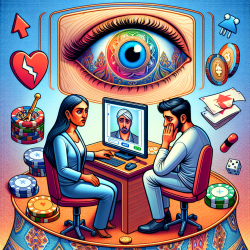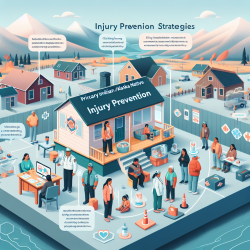The COVID-19 pandemic has necessitated a rapid shift to remote provision across Child and Adolescent Mental Health Services (CAMHS). A recent study titled ‘Space to hide’: experiences of remote provision across child and adolescent mental health services (CAMHS)’ delves into the experiences of young people, parents, and professionals with remote therapy. This blog explores how CAMHS practitioners can implement these research findings to enhance their remote therapy practices.
Understanding Remote Therapeutic Experiences
The study identified three overarching themes: ‘Remote therapeutic experiences’, ‘Spaces and places of therapy’, and ‘Future of CAMHS’. One of the key findings is that while remote appointments increased flexibility, the quality of the relational experience was often compromised. Here are some actionable insights:
- Flexibility and Accessibility: Remote therapy has made it easier for families to access services without the burden of travel. Practitioners should continue to offer remote options for those who find it beneficial, especially for individuals with mobility issues or severe anxiety.
- Non-verbal Communication: Clinicians have reported difficulties in assessing non-verbal cues online. Practitioners should receive training to enhance their skills in interpreting non-verbal communication in a virtual setting.
- Interactive Elements: The lack of interactive elements in online group sessions was highlighted. Sending sensory resources and worksheets via post can make online sessions more engaging.
Creating Spaces of Comfort and Safety
Remote therapy has been a double-edged sword in terms of comfort and safety. While some young people found comfort in being at home, others felt their personal space was invaded:
- Privacy Concerns: Practitioners should ensure that young people have a private and safe space for their sessions. Discussing privacy and confidentiality upfront can help mitigate these concerns.
- Distractions: Home environments can be distracting. Setting guidelines for a conducive therapy environment can help young people focus better during sessions.
Moving Towards a Hybrid Model
The future of CAMHS likely lies in a hybrid model of provision, combining both in-person and remote sessions:
- Individual Needs: A one-size-fits-all approach is not effective. Tailoring the mode of therapy to individual needs and preferences is crucial.
- Hybrid Approach: Implementing a blended approach that offers both in-person and remote options can cater to diverse needs. A ‘laptop loan scheme’ could be beneficial for those who prefer remote therapy but lack the necessary hardware.
By implementing these insights, CAMHS practitioners can improve their remote therapy practices, ensuring that they meet the needs of young people effectively. For a deeper understanding, we encourage you to read the original research paper, ‘Space to hide’: experiences of remote provision across child and adolescent mental health services (CAMHS)’.










